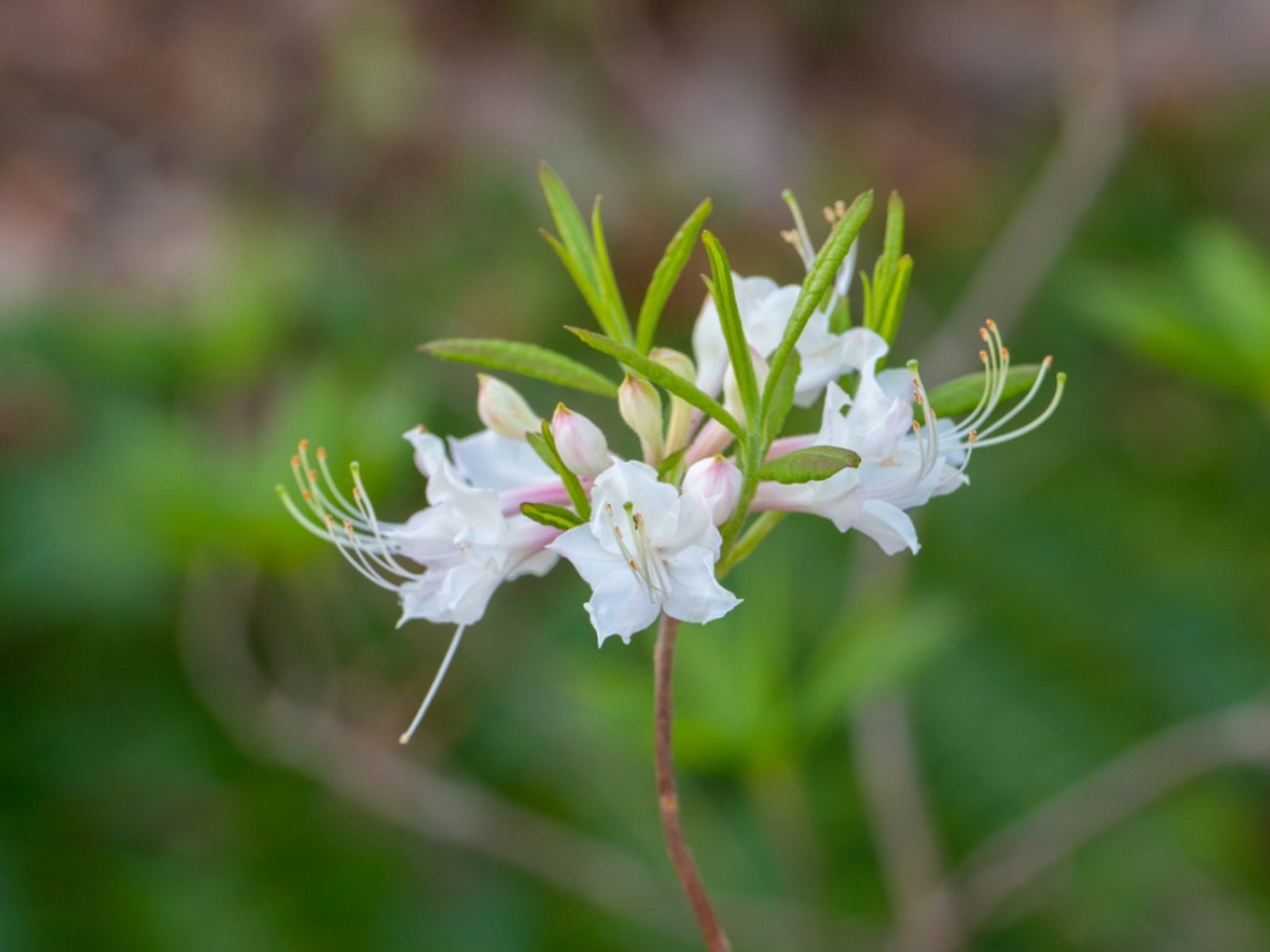Wild Azalea Care – Learn How To Grow Wild Azalea Shrubs


Wild azalea (Rhododendron canescens) is a striking plant also known as mountain azalea, hoary azalea, or Florida Pinxter azalea. Although it is native to the southeastern United States, wild azalea grows in mild climates across much of the country. Want to learn about growing wild azaleas in your garden? Read on for more information.
Mountain Azalea Info
Learn how to grow wild azaleas in the landscape is as easy as enjoying their blooms. Hummingbirds, bees, and butterflies are attracted to the clusters of sweet-smelling pink or white flowers that appear before new growth in spring too. That being said, the plant is also attractive to wildlife, including hungry deer. Keep this under consideration before adding it to the garden. Plant mountain azalea seeds in the garden in late fall or propagate softwood cuttings in late spring. Allow spreading room of 36 to 60 inches (1-2 m.) between plants. Mature wild azalea shrubs reach mature heights of 6 to 15 feet (2-4 m.), with a spread of 6 to 10 feet (2-3 m.). Mountain azalea thrives in full sun or partial shade, such as filtered light under tall deciduous trees. Too much shade will significantly decrease blooming. Soil should be moist and well drained. Like all rhododendrons and azaleas, wild azaleas prefer acidic soil.
Wild Azalea Care
Water wild azalea regularly during the first two years. Water deeply at the base of the plant and avoid wetting the foliage. If you use sprinklers, irrigate in the morning so the leaves have time to dry before evening as damp leaves may invite fungal diseases. Fertilize wild azalea in spring and again in late spring or early summer. Don’t feed after midsummer, as the tender new growth is more susceptible to frost when temperatures drop in fall. Spread 2 or 3 inches (5-8 cm.) of mulch around the plant to keep the soil cool and moist. Pinch growing tips when new shoots are several inches (8 cm.) long to promote healthy, bushy growth. Mountain azalea rarely needs pruning. Prune in spring if you want to shape the plant or remove damaged growth, as wild azalea blooms on previous year’s growth. Wild azalea is rarely bothered by pests, but mites are sometimes a problem, especially in hot, dry weather. Insecticidal soap spray usually takes care of the problem. Note: All parts of wild azalea plants are highly toxic, and ingestion may lead to a number of severe symptoms including stomach pain, nausea, vomiting, respiratory difficulties, weakness, loss of energy, depression, paralysis of legs and arms, coma, and death.
Gardening tips, videos, info and more delivered right to your inbox!
Sign up for the Gardening Know How newsletter today and receive a free copy of our e-book "How to Grow Delicious Tomatoes".

A Credentialed Garden Writer, Mary H. Dyer was with Gardening Know How in the very beginning, publishing articles as early as 2007.
-
 Looking For Plants To Give You The Soft And Fuzzies? Try These 5 Fuzzy Leaf Plant Options
Looking For Plants To Give You The Soft And Fuzzies? Try These 5 Fuzzy Leaf Plant OptionsLovers of texture, drama, silver foliage and tactile plants will adore these special sensory garden additions. These fuzzy leaf plant options will leave you all aglow
By Susan Albert
-
 Get Ready For A Summer Of Hummers! Grow These Full Sun Hummingbird Plants and Flowers
Get Ready For A Summer Of Hummers! Grow These Full Sun Hummingbird Plants and FlowersIf you’re lucky enough to enjoy a sunny backyard, make sure you are maxing out on your pollinator opportunities and grow these full sun hummingbird plants and flowers
By Tonya Barnett